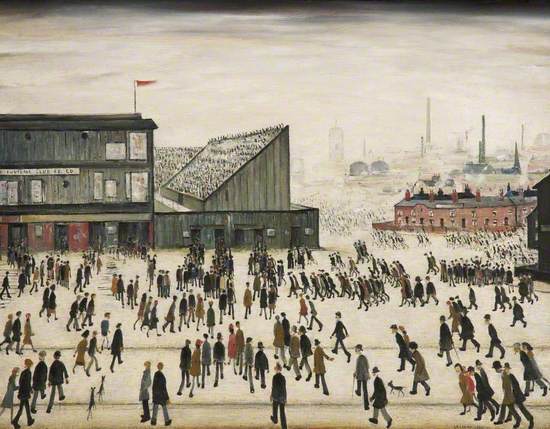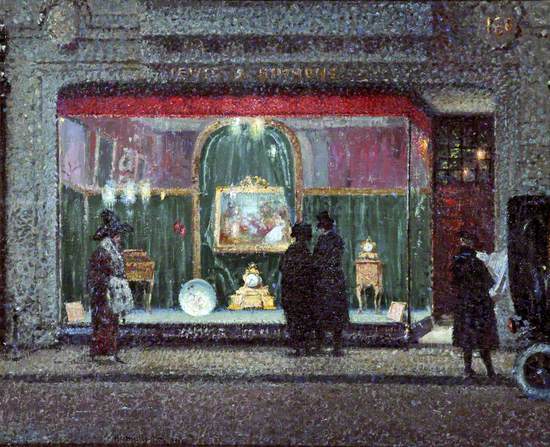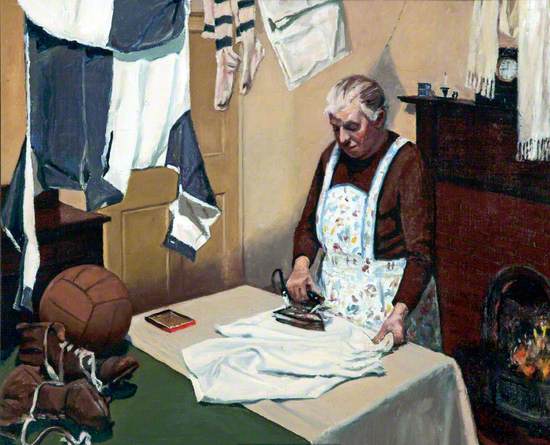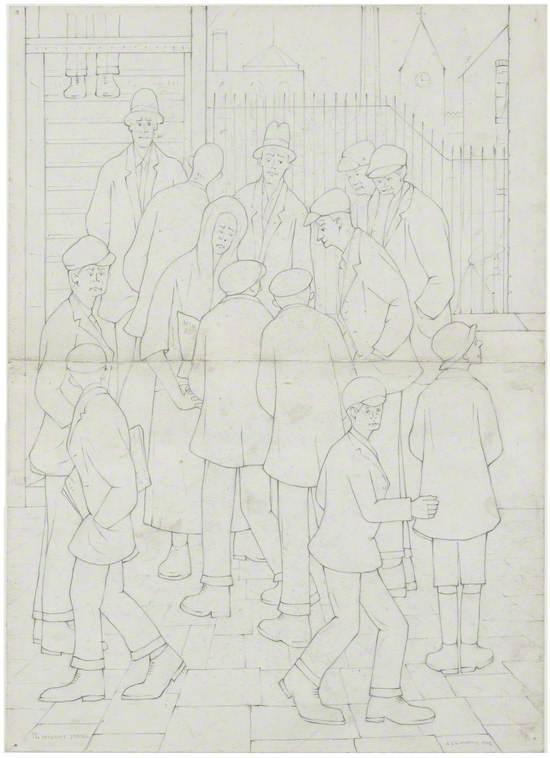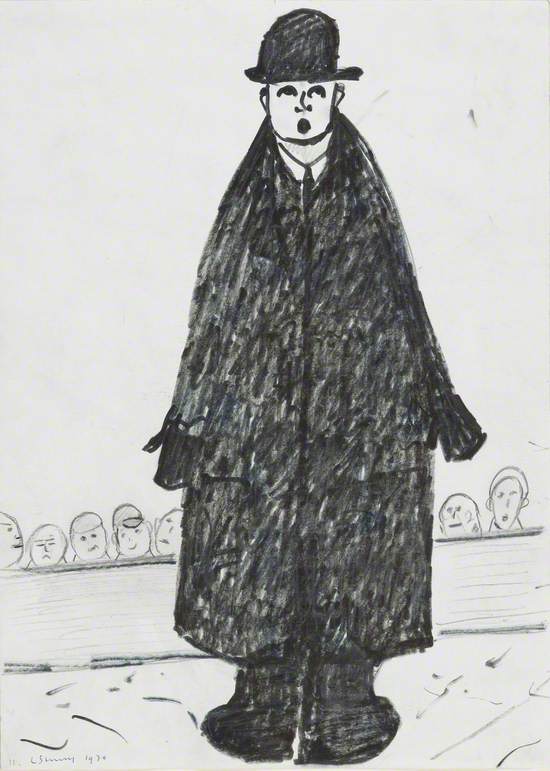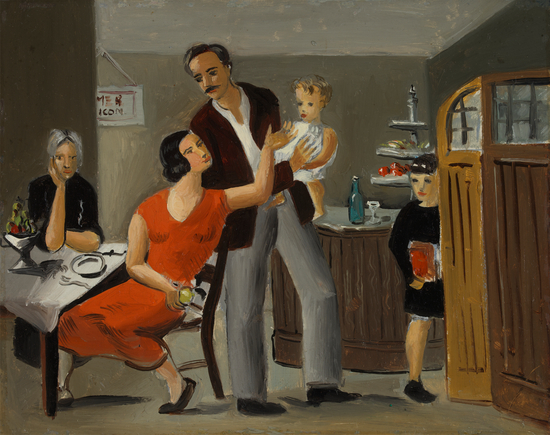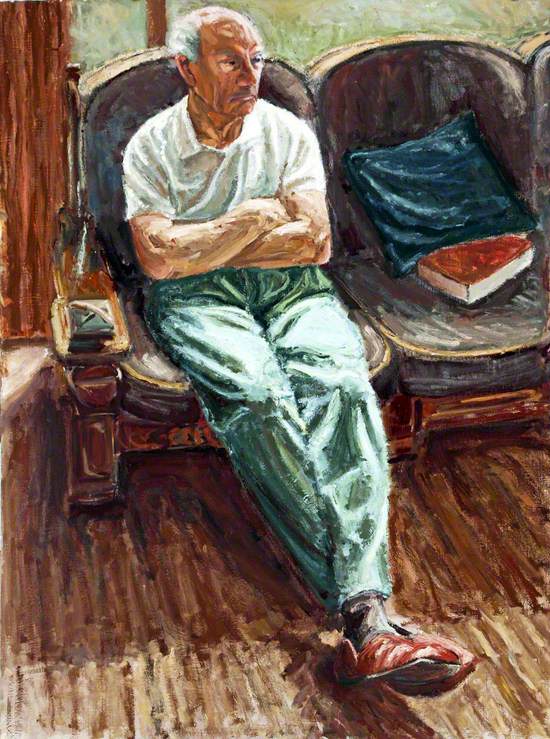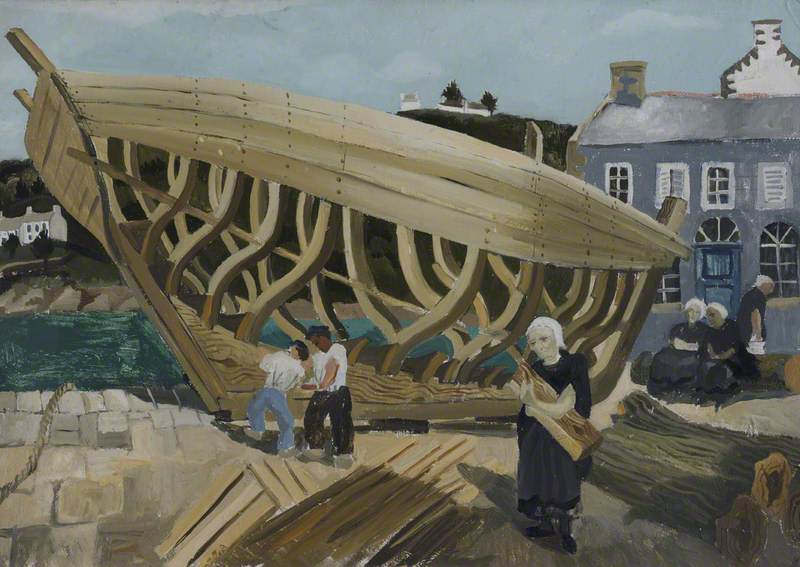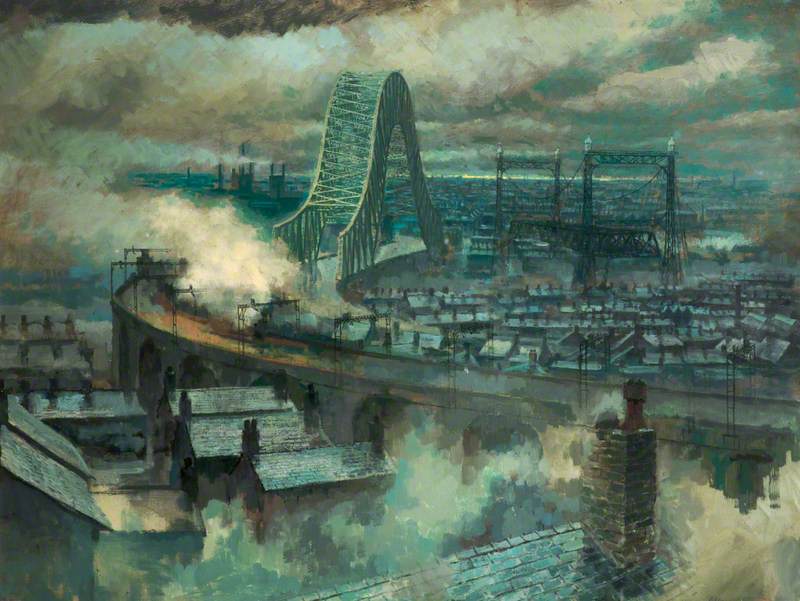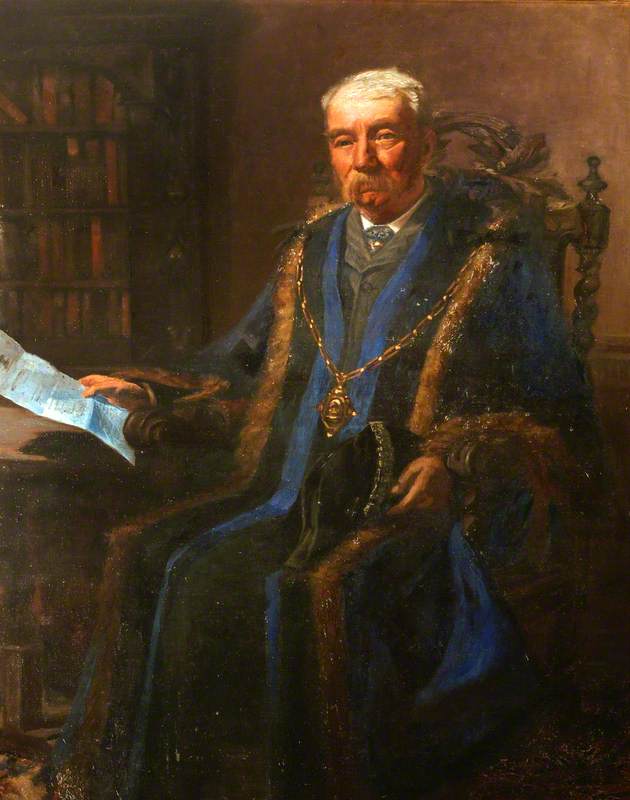From the 19th April to the 27th July 2024 L.S. Lowry's masterpiece Going to the Match will be on display at the Williamson, with another seven of his works on loan from the Lowry and the Lowry Estate.
Alongside Lowry’s work we have selected items from the Williamson’s collection that continue to explore and tie together the threads of how people lived, worked and enjoyed leisure activities. These artworks provide a broader survey of Northern art and artists, examining how Lowry sits within a wider context and how his work has influenced artists to come. They also explore how working-class leisure pursuits, and what they mean to their communities, have been portrayed from the mid-twentieth century to today.
.
Going to the Match
Going to the Match, painted in 1953, is L.S. Lowry's best-known and most popular picture. Although he painted football-themed scenes before and after this date it is Going to the Match which has become iconic - an enduring representation of what match day means to fans. The painting features Burnden Park, the original home of Bolton Wanderers. It is typical of Lowry that his focus is not on the match itself, but on the crowds streaming towards the ground. He spent much of his life painting people going about their everyday lives - going to work, to school, to the park and here, going to the match. Lowry's painting represents the world of football in the 1950s but its timeless quality makes it as relevant today as it ever was.
Laurence Stephen Lowry (1887–1976)
Oil on canvas
H 71 x W 91.5 cm
The Lowry Collection, Salford
The Shop Window
James Hamilton Hay was a Birkenhead-born painter and printmaker, who lived and worked in Liverpool for many years. This work contrasts Lowry’s realism, offering a decorative, romanticised style instead. A crowd of window shoppers look in at an opulent shopfront display.
James Hamilton Hay (1874–1916)
Oil on canvas
H 49 x W 59 cm
Williamson Art Gallery & Museum
Going to Work
Although appearing to be a 'typical' Lowry painting, Going to Work is an example of Lowry's experimentation with watercolour in late 1950s, a medium in which he only completed a few paintings. "Watercolours I've used only occasionally. They don't really suit me...dry too quickly. They're not flexible enough. I like a medium you can walk into, over a period of time."
Laurence Stephen Lowry (1887–1976)
Watercolour on paper
H 27 x W 38.5 cm
The Lowry Collection, Salford
The Night before the Cup Tie
This scene of a woman ironing a football kit captures the reality of grassroots sport. It shows the care, pride and labour that goes into football matches. This work showed in the Arts Council’s competition ‘Football and the Fine Arts’, which toured to Birkenhead. Entrants were encouraged to paint ‘any aspect of Association football’, and many of the selected works reflected the human element of the game.
William Turner (1877–1969)
Oil on canvas
H 53.3 x W 66 cm
Williamson Art Gallery & Museum
The Mid-Day Special
This drawing appears to show a newspaper seller with a crowd around him. Lowry was always drawn to impromptu gatherings in the streets, such as this.
Laurence Stephen Lowry (1887–1976)
Pencil on paper
H 38.4 x W 27.8 cm
The Lowry Collection, Salford
New Brighton, Wirral
Geoff Yeomans’s quintessentially Northern scene of a rainy day at the beach depicting a crowd of people huddled under a shelter to get out of the rain. Yeomans’s work is often in very much domestic and gritty, focusing on the everyday activities in people’s lives.
Geoff Yeomans (1934–2021)
Oil on board
H 76.2 x W 60.9 cm
Williamson Art Gallery & Museum
.
Untitled (Man in Black Bowler Hat)
Later in his career, Lowry began painting and drawing small groups of figures or individuals against a plain white background. There is little architectural or scenic in this painting to suggest location. Lowry insisted that the characters in these works were all based on real people he observed on the streets.
Laurence Stephen Lowry (1887–1976)
Pencil on paper
H 40.8 x W 29.5 cm
The Lowry Collection, Salford
French Family
Like Lowry, although he was a trained painter, Christopher Wood favoured a deliberately naive, almost childlike approach to painting figures. The work shows an intimate family scene in a café. The composition is dynamic, offering a snapshot of daily family life.
Christopher Wood (1901–1930)
Oil on board
H 18.5 x W 23 cm
Williamson Art Gallery & Museum
Dad
Nicola Rowley captures her dad, Antonio ‘Tony’ Rowley (1929-2006), in an unguarded moment. Rowley was a centre forward for Liverpool (1953-1958) and Tranmere Rovers (1958-1961). He was capped for Wales, and scored the last ever Christmas Day goal for Liverpool in 1957.
